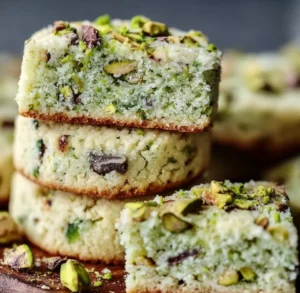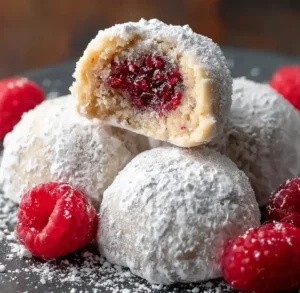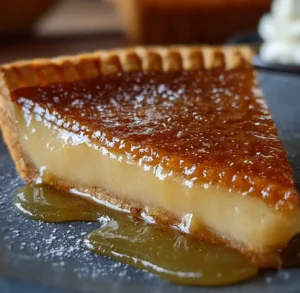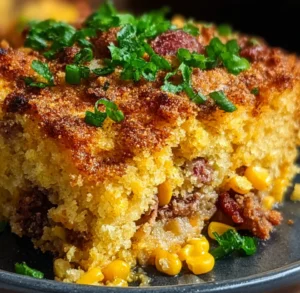| Prep Time | Cook Time | Total Time | Serves |
|---|---|---|---|
| 15 minutes | 50 minutes | 65 minutes | 12 |
Why This Carrot Pineapple Cake Recipe Works
The phenomenal success of this carrot pineapple cake stems from the brilliant interplay between ingredients that complement and enhance each other’s natural characteristics because every component has been carefully selected and balanced to contribute both flavor depth and structural integrity that results in consistently exceptional outcomes. Fresh carrots provide the foundational sweetness and vibrant color because their natural sugars caramelize beautifully during baking while their fiber content adds subtle texture that prevents the cake from becoming overly dense or heavy.
Crushed pineapple serves as both a moisture enhancer and flavor brightener because its natural fruit juices keep the cake incredibly tender while its tropical sweetness adds complexity that elevates the entire dessert beyond ordinary carrot cake expectations. The acidic nature of pineapple also activates the leavening agents more effectively because this chemical reaction creates the perfect rise and crumb structure that makes each slice light yet satisfying.
The combination of vegetable oil and eggs creates an emulsion that locks in moisture because oil coats the flour proteins more gently than butter while eggs provide structure and richness that binds all ingredients together harmoniously. This technique ensures that your carrot pineapple cake remains perfectly moist for days after baking because the oil-based formula doesn’t harden when cooled like butter-based alternatives often do.
Warm spices including cinnamon, nutmeg, and ginger work synergistically because they enhance the natural sweetness of both carrots and pineapple while adding aromatic complexity that makes each bite more interesting and memorable. The careful balance of brown and white sugars contributes both sweetness and moisture because brown sugar contains molasses that adds depth while white sugar provides the clean sweetness that allows other flavors to shine through clearly.
This recipe produces remarkably consistent results because the ratios have been tested extensively to account for variations in ingredient moisture content and environmental factors that can affect baking outcomes, ensuring that home bakers achieve professional-quality results every single time they prepare this extraordinary dessert.
Essential Ingredients for Perfect Carrot Pineapple Cake
For the Cake:
- 2 cups all-purpose flour (spooned and leveled)
- 1 1/2 teaspoons baking soda
- 1 teaspoon baking powder
- 1 teaspoon salt
- 2 teaspoons ground cinnamon
- 1/2 teaspoon ground nutmeg
- 1/2 teaspoon ground ginger
- 4 large eggs (room temperature)
- 1 1/4 cups vegetable oil
- 1 cup granulated sugar
- 1/2 cup packed brown sugar
- 2 teaspoons vanilla extract
- 3 cups finely grated carrots (about 1 pound)
- 1 cup crushed pineapple (undrained)
- 1 cup chopped walnuts (optional)
For the Cream Cheese Frosting:
- 8 ounces cream cheese (softened)
- 1/2 cup unsalted butter (softened)
- 4 cups powdered sugar (sifted)
- 1 teaspoon vanilla extract
- Pinch of salt
Creating an exceptional carrot pineapple cake requires selecting premium ingredients because the relatively simple nature of this recipe means that each component must contribute optimal flavor and texture to achieve the sophisticated results that make this dessert so memorable and beloved. Fresh carrots form the vegetable foundation because their natural sweetness, vibrant color, and moisture content directly impact both the visual appeal and taste profile, so choose firm, bright orange carrots without soft spots or excessive sprouting that could indicate age or improper storage conditions.
Quality crushed pineapple provides essential moisture and distinctive tropical flavor because canned varieties packed in natural juice rather than heavy syrup offer superior flavor balance while contributing the liquid content necessary for achieving the signature moist texture that defines this exceptional cake. Room temperature eggs incorporate more effectively because this temperature allows for better emulsification with oils and sugars while creating the stable structure necessary for proper rise and optimal texture development throughout the baking process.
The Art of Creating Perfect Carrot Pineapple Cake
Mastering the creation of perfect carrot pineapple cake involves understanding the delicate balance between moisture management and structural integrity because this knowledge enables you to achieve consistently excellent results while avoiding common pitfalls that can compromise the cake’s signature characteristics of incredible moistness and perfect texture. The preparation process begins with bringing all ingredients to room temperature because this temperature equality ensures smooth mixing and proper emulsification that prevents separation or uneven texture development during the crucial mixing and baking phases.
Proper carrot preparation significantly impacts the final cake texture because uniformly grated carrots distribute evenly throughout the batter while releasing the optimal amount of moisture to enhance tenderness without creating soggy spots that could compromise structural integrity. The grating technique matters considerably because fine, consistent shreds integrate seamlessly into the batter while maintaining enough texture to provide visual interest and subtle textural contrast in the finished cake that makes each bite more engaging.
Understanding the correct mixing method prevents gluten overdevelopment because gentle incorporation techniques preserve the tender crumb that makes this cake so appealing while ensuring complete ingredient integration that prevents flour pockets or uneven flavor distribution. The proper approach involves combining wet and dry ingredients just until incorporated because this careful technique maintains the delicate balance between thorough mixing and the light texture that distinguishes exceptional homemade cakes from dense, heavy alternatives.
Batter consistency should appear thick but pourable because the addition of grated carrots and crushed pineapple naturally increases density while contributing moisture that continues affecting texture throughout the entire baking process, requiring careful attention to ingredient ratios and mixing techniques that accommodate these substantial additions.
Step-by-Step Instructions for Carrot Pineapple Cake
Preparing Your Kitchen and Equipment
Begin by preheating your oven to 350°F because this moderate temperature ensures even baking throughout the substantial batter while preventing excessive browning that could create bitter flavors or dried edges that would compromise the moist texture you’re working to achieve. Grease two 9-inch round cake pans thoroughly with butter or cooking spray because proper pan preparation prevents sticking while ensuring easy release of the finished cake layers without breaking or leaving pieces behind.
Line the bottom of each prepared pan with parchment paper circles because this additional insurance against sticking makes cake removal completely foolproof, especially important with this dense, moist cake that could easily break if it adheres to the pan bottom during the removal process. Lightly dust the greased and lined pans with flour because this creates an extra barrier against sticking while helping the batter climb the pan sides evenly during the rising process.
Professional Tip: Measure all ingredients accurately using proper techniques because baking requires precision, and even small variations can significantly affect the final texture and flavor of your carrot pineapple cake.
Key Points: Room temperature ingredients mix more easily and create better emulsification because cold ingredients can cause separation while overly warm conditions may begin cooking the eggs prematurely, affecting the final cake structure.
Creating the Dry Ingredient Foundation
Combine all dry ingredients in a large mixing bowl because this ensures even distribution of leavening agents and spices throughout the flour base while preventing concentrated pockets of flavors that could create uneven results in the finished cake. Whisk together flour, baking soda, baking powder, salt, cinnamon, nutmeg, and ginger thoroughly because complete blending distributes these crucial components evenly while incorporating air that contributes to proper texture development and optimal rise during baking.
Sift the combined dry ingredients if you prefer an extra-smooth texture because this process removes any lumps while further aerating the mixture, though thorough whisking achieves similar results for most home baking applications and saves time during the preparation process. Set the well-mixed dry ingredients aside while you prepare the wet components because this organized approach prevents rushing that could lead to overmixing when combining the two mixtures.
Professional Tip: Use the spoon-and-level method for measuring flour because scooping directly from the container can pack too much flour into your measuring cup, resulting in dense, heavy cake texture that lacks the light, tender quality you want to achieve.
Key Points: Even spice distribution throughout the flour mixture ensures consistent flavor in every bite because unevenly mixed spices can create portions that are either bland or overwhelmingly spicy, affecting the overall eating experience and enjoyment.
Mixing the Wet Ingredients
Combine eggs, vegetable oil, granulated sugar, brown sugar, and vanilla extract in a large mixing bowl because this order allows the sugars to begin dissolving while the oil coats the eggs for smooth emulsification that creates the stable base necessary for incorporating other ingredients. Beat the mixture with an electric mixer on medium speed for 2-3 minutes because this duration creates proper emulsification while incorporating air that contributes to cake lightness without overdeveloping the mixture.
The combined wet ingredients should appear smooth and slightly thickened because proper mixing creates a stable emulsion that prevents separation during baking while ensuring even distribution of sweetness and flavors throughout the finished cake. Add the undrained crushed pineapple and mix briefly because this tropical fruit contributes essential moisture while the natural fruit pieces add texture and bright flavor that defines this cake’s distinctive character.
Professional Tip: Don’t drain the pineapple juice because this liquid component provides crucial moisture that contributes to the signature tenderness and keeping quality that makes this carrot pineapple cake so exceptional and long-lasting.
Key Points: Proper emulsification of wet ingredients creates a stable foundation because well-mixed components prevent separation during baking that could result in uneven texture or oil pooling in the finished cake layers.
Incorporating Carrots and Final Assembly
Add the prepared dry ingredient mixture to the wet ingredients in three separate additions because this gradual incorporation method prevents overmixing while ensuring complete integration without leaving flour pockets that could create dense spots or uneven texture in the finished cake. Mix on low speed just until each addition disappears into the batter because excessive mixing develops gluten that creates tough, chewy texture rather than the tender, moist crumb you want to achieve.
Fold in the finely grated carrots and chopped nuts using a large spoon or rubber spatula because gentle hand mixing at this final stage prevents overmixing while ensuring even distribution of these substantial add-ins throughout the batter without breaking down the carrots or nuts excessively. The completed batter should appear thick but spreadable because the vegetable and fruit additions naturally create a denser consistency than typical cake batters while maintaining enough moisture to pour easily.
Professional Tip: Stop mixing immediately when ingredients are just combined because overmixed carrot pineapple cake becomes dense and tough rather than moist and tender, so it’s better to err on the side of slightly undermixed rather than overworked batter.
Key Points: Gentle folding preserves cake tenderness because vigorous mixing at this stage develops gluten strands that create undesirable chewy texture instead of the light, moist crumb that makes this dessert so appealing and memorable.
Baking to Perfection
Divide the prepared batter evenly between the greased and lined cake pans because equal distribution ensures even baking and matching layer heights that make assembly easier and create a more professional-looking finished cake. Smooth the batter surfaces gently with an offset spatula because level tops promote even rising while preventing one side from browning more quickly than the other during the baking process.
Bake for 45-50 minutes or until a toothpick inserted into the center comes out with just a few moist crumbs attached because this timing allows complete cooking while preventing overbaking that could dry out the naturally moist texture that defines this exceptional cake. Avoid opening the oven door during the first 40 minutes of baking because temperature fluctuations can cause the cake to fall or bake unevenly.
Professional Tip: Rotate the pans halfway through baking time because this technique ensures even browning and prevents hot spots in your oven from creating unevenly baked cake layers that could affect both appearance and texture.
Key Points: Proper timing prevents overbaking because this naturally moist cake can transition from perfectly done to dry very quickly, so begin checking for doneness a few minutes before the minimum recommended time to ensure optimal results.
Professional Tips for Perfect Carrot Pineapple Cake
Ingredient quality significantly impacts final results because fresh spices provide more intense, complex flavors while properly stored carrots contribute better texture and natural sweetness than aged vegetables that may have lost moisture and developed bitter compounds that could affect the overall taste profile. Purchase whole spices when possible and grind them yourself because pre-ground spices lose potency rapidly while freshly ground alternatives provide maximum flavor impact and aromatic intensity.
Room temperature ingredients emulsify more effectively because cold components can cause separation or uneven mixing while ingredients that are too warm can begin cooking prematurely, affecting both texture and flavor development in unpredictable ways. Remove eggs, cream cheese, and butter from refrigeration at least one hour before beginning your preparation because this timing allows them to reach optimal temperature for smooth incorporation.
Proper carrot preparation technique affects both texture and moisture distribution because uniformly grated carrots integrate better throughout the batter while releasing consistent moisture levels that contribute to even baking and optimal texture development. Use the fine holes on a box grater or the shredding disc of a food processor because this size provides optimal integration without creating overly large pieces that could interfere with cake structure or create uneven texture.
Storage considerations affect both immediate serving quality and longer-term freshness because carrot pineapple cake actually improves in flavor after resting overnight while proper wrapping maintains moisture levels that keep the cake fresh and delicious for several days. Cool cake layers completely before wrapping because trapped steam can create soggy texture while inadequate cooling can cause condensation that affects frosting adhesion and overall presentation quality.
Creative Variations of Carrot Pineapple Cake
Transform your basic carrot pineapple cake into exciting new variations by incorporating complementary ingredients that enhance or modify the flavor profile because these creative adaptations allow you to customize the recipe for different dietary preferences, seasonal availability, or special occasions while maintaining the essential moist texture and delicious taste that makes this dessert so beloved. Tropical carrot pineapple cake intensifies the island flavors because adding shredded coconut and chopped macadamia nuts creates a more pronounced tropical character while maintaining the signature moist, tender texture that defines this exceptional dessert.
Spiced carrot pineapple cake incorporates additional warming elements because adding cardamom, allspice, or a pinch of ground cloves creates more complex spice profiles that work particularly well during autumn and winter months when heartier, more warming flavors are most appealing and comforting. These complementary spices enhance the existing cinnamon and nutmeg because they share similar aromatic compounds that blend harmoniously rather than competing with the established flavor foundation.
Chocolate chip carrot pineapple cake adds richness and visual appeal because mini chocolate chips provide sweet contrast to the vegetable and fruit flavors while creating delightful textural variety that appeals especially to chocolate lovers and children who might otherwise be hesitant about vegetable-based desserts. The chocolate complements rather than overwhelms because its sweetness harmonizes with the natural sugars in carrots and pineapple while adding indulgent appeal that makes the cake feel more like a special treat.
Individual carrot pineapple cupcakes provide perfect portion control and easy serving because the same exceptional batter bakes beautifully in standard muffin tins while reducing cooking time and creating individually frosted treats that are perfect for parties, lunch boxes, or elegant dessert presentations. Adjust baking time to 18-22 minutes because smaller portions cook more quickly while requiring careful monitoring to prevent overbaking that could compromise the moist texture.
Bundt carrot pineapple cake creates stunning presentation because the decorative pan shape eliminates the need for elaborate frosting techniques while producing an elegant centerpiece that showcases the cake’s beautiful golden color and appealing texture. Increase baking time to 55-70 minutes because the thicker cake requires longer cooking while the even heat distribution of Bundt pans helps ensure thorough baking without drying out the exterior.
Perfect Pairing Ideas for Carrot Pineapple Cake
The rich, moist character of carrot pineapple cake makes it an ideal companion for a diverse array of beverages and complementary foods because its sweet, spiced profile pairs beautifully with both casual coffee service and elegant dessert presentations while its substantial yet tender texture satisfies without overwhelming the palate or leaving guests feeling overly full. Coffee and espresso-based drinks complement this cake exceptionally well because the bitter compounds in coffee provide pleasant contrast to the sweet, tropical flavors while the caffeine enhances perception of the complex spice blend and fruit notes.
Tea service offers another excellent pairing opportunity because Earl Grey’s distinctive bergamot notes complement the cake’s bright pineapple elements while chai spices echo and enhance the cinnamon, nutmeg, and ginger already present in the cake, creating harmonious flavor combinations that feel both sophisticated and comforting. For those seeking non-caffeinated options, herbal teas like chamomile or fresh ginger tea provide soothing accompaniments because their gentle, warming flavors don’t compete with the cake’s complex profile while adding complementary aromatic elements.
Fresh fruit serves as a light, refreshing counterpoint because seasonal berries, sliced citrus, or tropical fruits provide acidic brightness that cuts through the rich cream cheese frosting while adding visual color contrast that makes dessert presentations more appealing and Instagram-worthy. The natural tartness in fresh fruit balances the cake’s sweetness because this combination prevents palate fatigue while providing cleansing elements between bites that allow guests to fully appreciate the complex flavors.
For those interested in creating complete brunch experiences that complement this tropical-inspired cake, consider exploring the comprehensive breakfast collection at Solush Recipes because these recipes often feature similar warming spices and natural ingredients that create cohesive menu experiences while providing variety throughout different courses and serving styles.
Light salads with citrus vinaigrettes can provide refreshing contrast because the acidic dressing components cleanse the palate while fresh greens add textural variety that makes rich desserts more enjoyable and less overwhelming. The creative salad options at Tasty Middles offer inspiring combinations that would pair beautifully with this cake while creating well-balanced dining experiences that satisfy multiple taste preferences and dietary considerations.
Discover More Exceptional Baking and Culinary Inspirations
Expanding your baking repertoire beyond carrot pineapple cake opens up exciting possibilities for creating memorable dessert experiences because understanding the principles that make this cake successful allows you to apply similar techniques to other fruit and vegetable-based desserts while developing confidence and skills as an accomplished home baker. The art of incorporating fresh produce into baked goods involves carefully balancing moisture content, natural sugars, and structural integrity because these factors determine whether additions enhance or compromise the final product’s taste, texture, and visual appeal.
Seasonal baking keeps your dessert rotation interesting and relevant because different times of year offer unique ingredients and flavor profiles that can transform basic recipes into exciting new creations that celebrate the best of each season’s bounty. Spring might emphasize fresh strawberries and rhubarb because these ingredients provide bright, tart flavors that celebrate renewal and growth, while summer offers abundant stone fruits and berries because their peak flavors create naturally sweet desserts that require minimal added sugar while showcasing nature’s candy at its finest.
The world of spice cakes extends far beyond carrot varieties because ingredients like zucchini, sweet potato, parsnips, and even beets can create similar moist, flavorful cakes while offering different nutritional profiles and unique flavor characteristics that keep your baking adventures fresh and exciting. Understanding how to work with vegetable-based batters allows you to experiment confidently because the basic principles of moisture management, spice balancing, and proper mixing techniques apply across many different ingredient combinations and seasonal variations.
For those interested in exploring sophisticated flavor combinations and presentation techniques, the expertly crafted collection at Solush Recipes demonstrates how traditional ingredients can be combined in innovative ways that create complex, restaurant-quality flavors while maintaining accessibility for enthusiastic home cooks who want to elevate their culinary skills and impress family and friends.
International baking traditions offer valuable inspiration for incorporating unusual ingredients because many cultures have developed time-tested techniques for balancing sweet and savory elements in dessert preparations that can broaden your understanding of flavor combinations. Middle Eastern date and nut combinations, Asian sweet bean preparations, and European vegetable tarts all demonstrate successful approaches that prove creative ingredient partnerships can produce exceptional results when guided by traditional wisdom and modern techniques.
Proper Storage Guidelines for Carrot Pineapple Cake
Understanding proper storage techniques for carrot pineapple cake ensures that you maintain optimal flavor and texture because the high moisture content and cream cheese frosting require specific handling procedures to preserve quality while preventing spoilage that could compromise both food safety and taste enjoyment. Unfrosted cake layers can be stored at room temperature for up to two days when wrapped tightly in plastic wrap because this prevents moisture loss while allowing the complex flavors to meld and develop greater depth and richness over time.
Frosted cake requires immediate refrigeration because cream cheese-based frostings contain dairy products that can spoil rapidly at room temperature while cold storage helps maintain the frosting’s stability and smooth texture while preventing harmful bacterial growth that could cause foodborne illness. Store frosted carrot pineapple cake in the refrigerator for up to five days because this timeframe ensures optimal quality while preventing deterioration of both cake and frosting components that could affect taste and safety.
For optimal serving quality and flavor appreciation, remove refrigerated cake from cold storage 30-60 minutes before serving because this warming period allows the flavors to brighten and the texture to soften while preventing the muted taste and firm texture that often accompany cold desserts. Cover the cake loosely during this warming period because protection prevents surface drying while allowing gradual temperature equilibration that brings out the full spectrum of flavors and aromas.
Freezing extends storage life significantly because properly wrapped cake layers maintain excellent quality for up to three months while providing convenient advance preparation options for special occasions, holiday planning, or unexpected entertaining needs. Wrap individual layers tightly in plastic wrap followed by aluminum foil because this double protection prevents freezer burn while maintaining the moisture levels that preserve the cake’s signature tender texture and rich flavor profile.
Individual cake portions store more successfully when properly covered because exposed surfaces dry out rapidly while appropriate covering maintains moisture levels that keep individual servings fresh and appealing for several days after the initial cutting and serving.
The Science Behind Carrot Pineapple Cake’s Success
The remarkable success of carrot pineapple cake stems from fascinating chemical interactions between natural sugars, plant fibers, fruit acids, and moisture content because scientific understanding of these processes helps explain why this particular combination creates such exceptional texture, flavor development, and keeping quality that distinguishes it from ordinary desserts. Beta-carotene in carrots provides the characteristic warm golden color because this fat-soluble pigment remains stable during baking while contributing nutritional value and visual appeal that makes the cake as beautiful as it is delicious.
Natural fruit acids in pineapple serve multiple crucial functions because they tenderize protein structures in flour while creating an acidic environment that enhances browning reactions and complex flavor development throughout the baking process. These same acids react with baking soda to create additional leavening because this chemical reaction produces carbon dioxide bubbles that contribute to the cake’s light, tender crumb structure while ensuring proper rise and optimal texture.
Moisture management represents a critical scientific factor because the high water content in both carrots and pineapple could potentially create undesirable soggy texture if not properly balanced with flour absorption and controlled evaporation during the carefully timed baking process. The substantial oil content helps stabilize this moisture because fat molecules coat flour proteins effectively while preventing excessive gluten development that could create tough, chewy texture instead of the tender crumb that makes this cake so appealing.
Maillard reactions during baking create the complex, appealing flavor compounds because the natural sugars in vegetables and fruit interact with proteins at elevated temperatures to produce rich, caramelized flavors that develop gradually throughout the proper baking process. These same chemical reactions contribute to the appetizing golden-brown color because the processes that create flavor also produce the visual characteristics that make the cake so appealing and appetizing.
Temperature control affects these chemical processes significantly because proper oven heat activates beneficial enzymes and chemical reactions while excessive temperature can destroy delicate flavor compounds or create bitter notes that would compromise the cake’s overall appeal and enjoyment.
Troubleshooting Common Carrot Pineapple Cake Issues
Creating perfect carrot pineapple cake requires understanding common problems and their effective solutions because even experienced bakers occasionally encounter challenges that can affect both texture and flavor of this moisture-rich, complex dessert. Dense, heavy texture typically results from overmixing the batter because excessive agitation develops tough gluten strands that create chewy, unpleasant cake texture rather than the tender, moist crumb that makes this dessert so enjoyable and memorable.
If your cake turns out disappointingly dense, reduce mixing time significantly in future batches because gentle incorporation of ingredients preserves the delicate protein structure while ensuring adequate ingredient distribution without overdevelopment. Mix wet and dry ingredients just until barely combined because visible flour streaks are preferable to overmixed batter that produces dense, tough results that lack the light, tender quality you’re trying to achieve.
Soggy or undercooked centers often indicate insufficient baking time or inaccurate oven temperature because the dense, moisture-rich batter requires adequate heat penetration to cook through completely while maintaining proper moisture levels that create the ideal texture. Use a reliable oven thermometer to verify temperature accuracy because many home ovens run significantly hotter or cooler than their dial settings indicate, affecting baking results in unpredictable ways.
Extend baking time carefully if necessary because this naturally moist cake often requires longer cooking than standard cake recipes while remaining vigilant about overbaking that could dry out the tender texture and compromise the exceptional keeping quality. Test doneness with a clean toothpick because it should emerge with just a few moist crumbs rather than wet batter, indicating proper doneness without overcooking.
Cracked cake tops usually result from oven temperature that’s too high because excessive heat causes rapid rising that creates surface tension and eventual structural failure. Reduce oven temperature by 25°F and extend baking time accordingly because gentler heat allows even cooking while preventing the rapid expansion that causes unsightly cracks and uneven texture development.
Frosting that slides off or won’t adhere properly typically indicates that the cake layers are still too warm because residual heat melts the butter and cream cheese components, preventing proper adhesion and creating messy presentation. Cool cake layers completely to room temperature before attempting to frost because this ensures stable temperature conditions that allow frosting to set properly while maintaining its intended shape and smooth appearance.
Additional Inspirations for Exceptional Home Baking
The fundamental principles that make carrot pineapple cake so successful can inspire broader exploration of vegetable and fruit-based baking because understanding how to incorporate fresh produce into desserts opens up countless possibilities for creating healthier, more flavorful treats that showcase seasonal ingredients while providing superior nutrition compared to traditional alternatives. Many traditional baking approaches discourage adding vegetables to sweet preparations, but modern techniques demonstrate how proper preparation and careful balancing can create exceptional results that rival any conventional dessert.
Seasonal adaptation keeps your baking repertoire fresh and exciting because different times of year offer unique opportunities to experiment with peak-season produce while creating desserts that complement the natural rhythm of ingredient availability and seasonal celebrations. Summer zucchini bread utilizes abundant garden harvests because this versatile vegetable provides moisture and subtle flavor while cleverly disguising nutritious content in appealing sweet presentations that even vegetable-averse family members will enjoy.
The art of spice blending extends far beyond traditional combinations because experimenting with different aromatic profiles can create signature flavors that distinguish your baking from commercial alternatives while reflecting personal preferences and cultural influences. Understanding how spices interact chemically and flavor-wise allows confident experimentation because basic principles of balance and harmony guide successful combinations while personal taste preferences drive creative exploration and innovation.
For those interested in expanding their entertaining repertoire with complementary savory options, the sophisticated collection at Solush Recipes demonstrates how to create cohesive menu experiences that balance sweet desserts with complementary savory elements, creating memorable dining experiences that showcase both technical skill and creative vision while satisfying diverse palate preferences.
Understanding the psychology of flavor pairing helps create more successful and appealing recipes because certain combinations trigger positive associations and memories while others may seem unusual until properly balanced and presented with confidence and enthusiasm. This knowledge encourages bakers to experiment boldly with unconventional but harmonious ingredient partnerships that can lead to breakthrough recipes and signature creations.
For those looking to create comprehensive appetizer spreads that would complement this cake beautifully, the extensive collection at Tasty Middles offers numerous recipes that feature complementary flavors and textures while providing satisfying options that prepare guests for the rich, indulgent dessert experience that awaits them.
Conclusion
This comprehensive exploration of carrot pineapple cake demonstrates how thoughtful ingredient selection, proper technique, and scientific understanding can transform simple pantry staples into an extraordinary dessert experience because the marriage of sweet carrots, tropical pineapple, and warming spices creates complexity and satisfaction that rivals the most expensive bakery offerings while providing the personal satisfaction that comes from homemade excellence. The beauty of this recipe lies not only in its exceptional flavor and texture but also in its remarkable versatility because the basic formula can be adapted for different occasions, dietary preferences, and seasonal ingredients while maintaining the fundamental characteristics that make this dessert so beloved and memorable.
Understanding the science and technique behind successful carrot pineapple cake empowers you to create consistently excellent results because knowledge of how ingredients interact allows you to troubleshoot problems confidently and adapt the recipe for different preferences or requirements while maintaining the essential moisture, flavor balance, and structural integrity that distinguish exceptional homemade desserts. The skills demonstrated in this recipe apply broadly to many other baking projects because mastering moisture management, proper mixing techniques, and ingredient balance provides the foundation for success across numerous different styles and ingredient combinations.
Regular practice with this carrot pineapple cake will develop your baking instincts and technical confidence because repeated preparation builds understanding of proper batter consistency, optimal timing, and ideal texture recognition that distinguish accomplished home bakers from casual enthusiasts. The investment in quality ingredients and proper technique pays dividends in consistently superior results because premium components and careful attention to detail make the dramatic difference between ordinary and extraordinary outcomes that create lasting memories and eager anticipation for your next baking creation.
Whether you’re seeking a stunning centerpiece for special celebrations, a comforting treat for everyday enjoyment, or an impressive demonstration of your advancing baking skills, this carrot pineapple cake provides the perfect combination of accessibility and sophistication because it combines straightforward methods with professional-quality results that showcase the transformative power of understanding ingredients, respecting technique, and applying knowledge with confidence and creativity that makes every baking adventure a rewarding journey toward culinary excellence.










